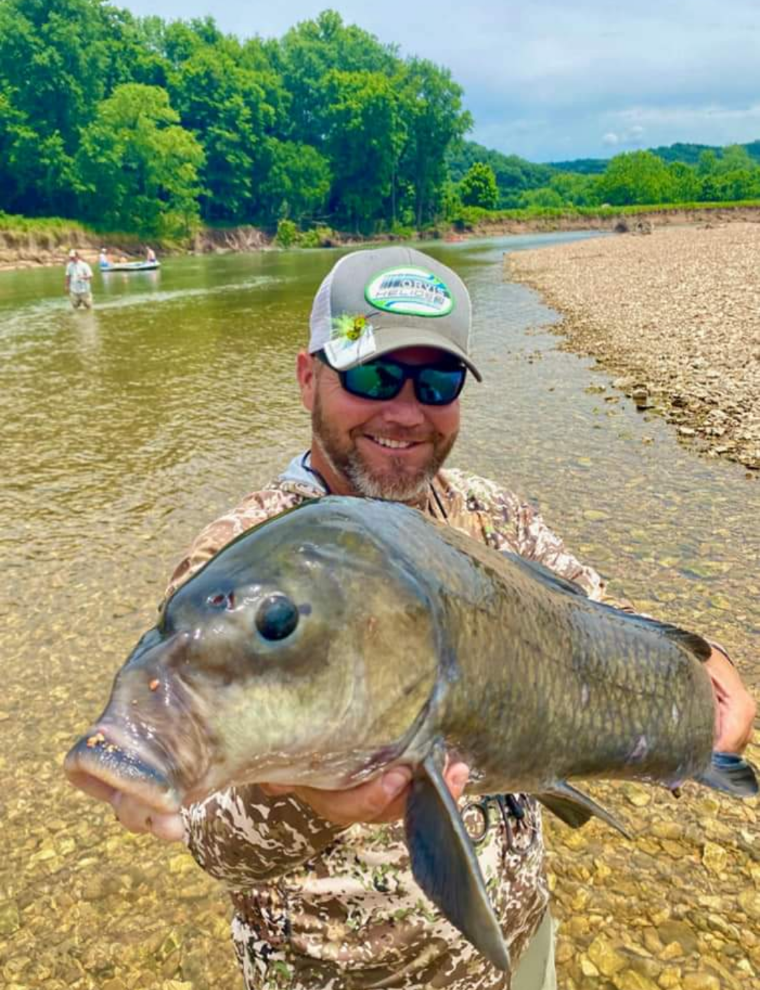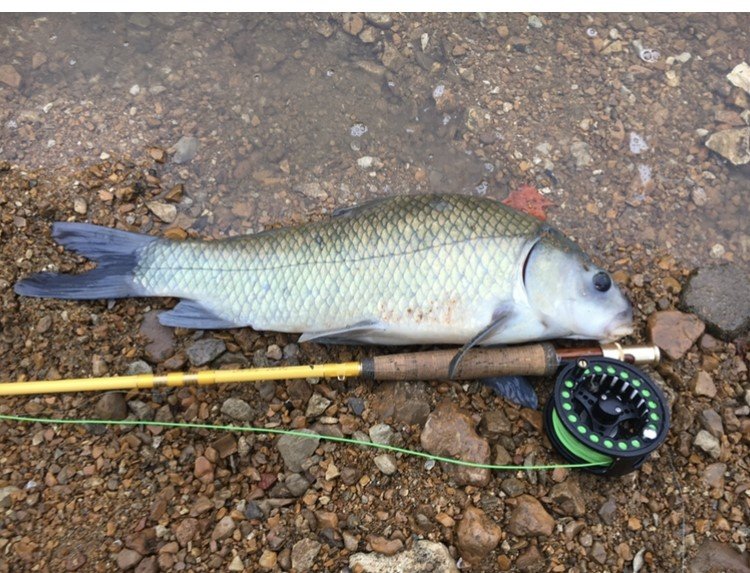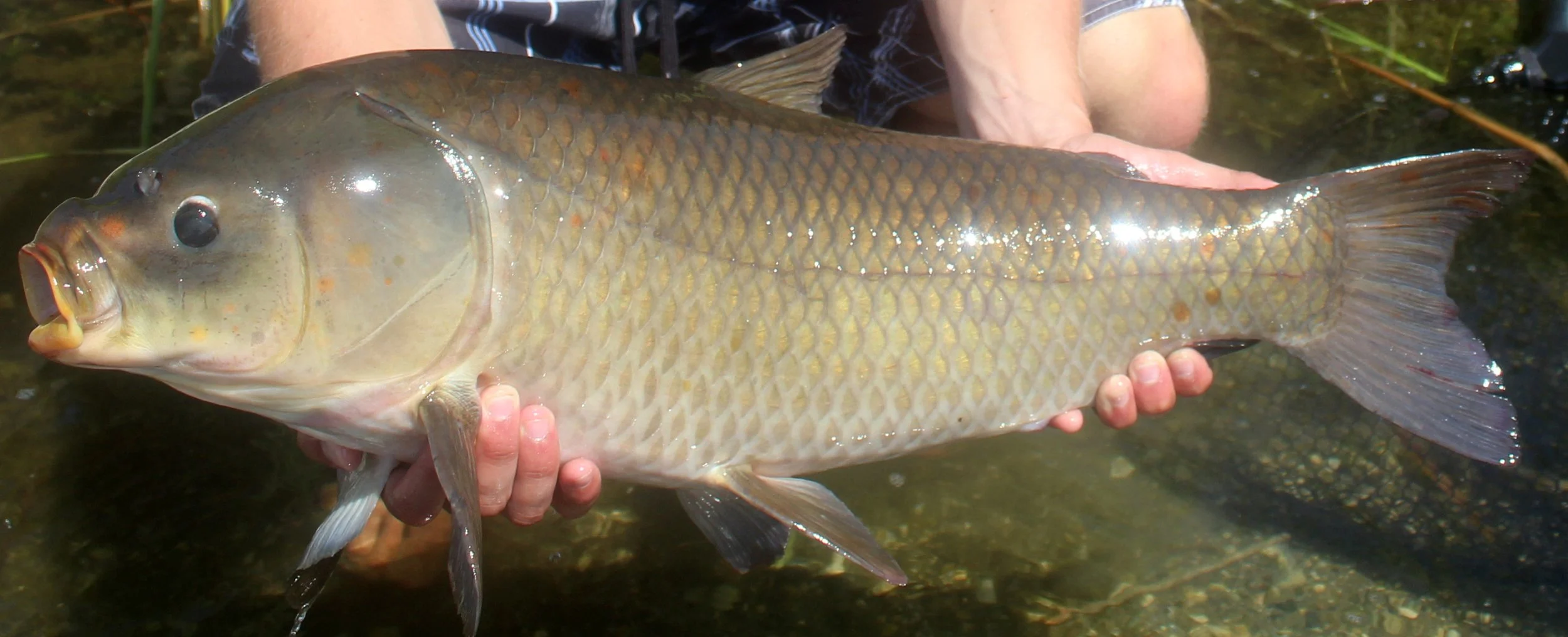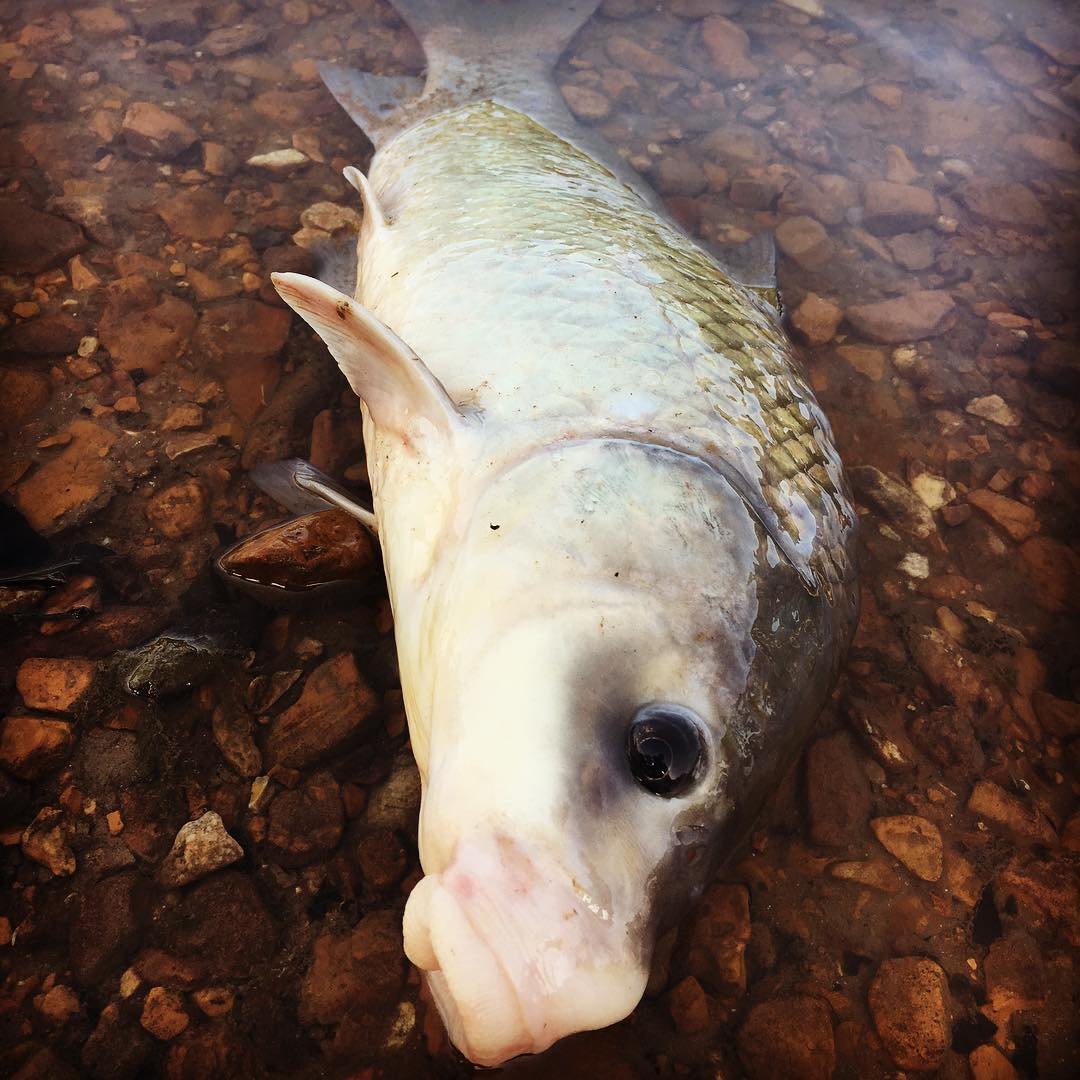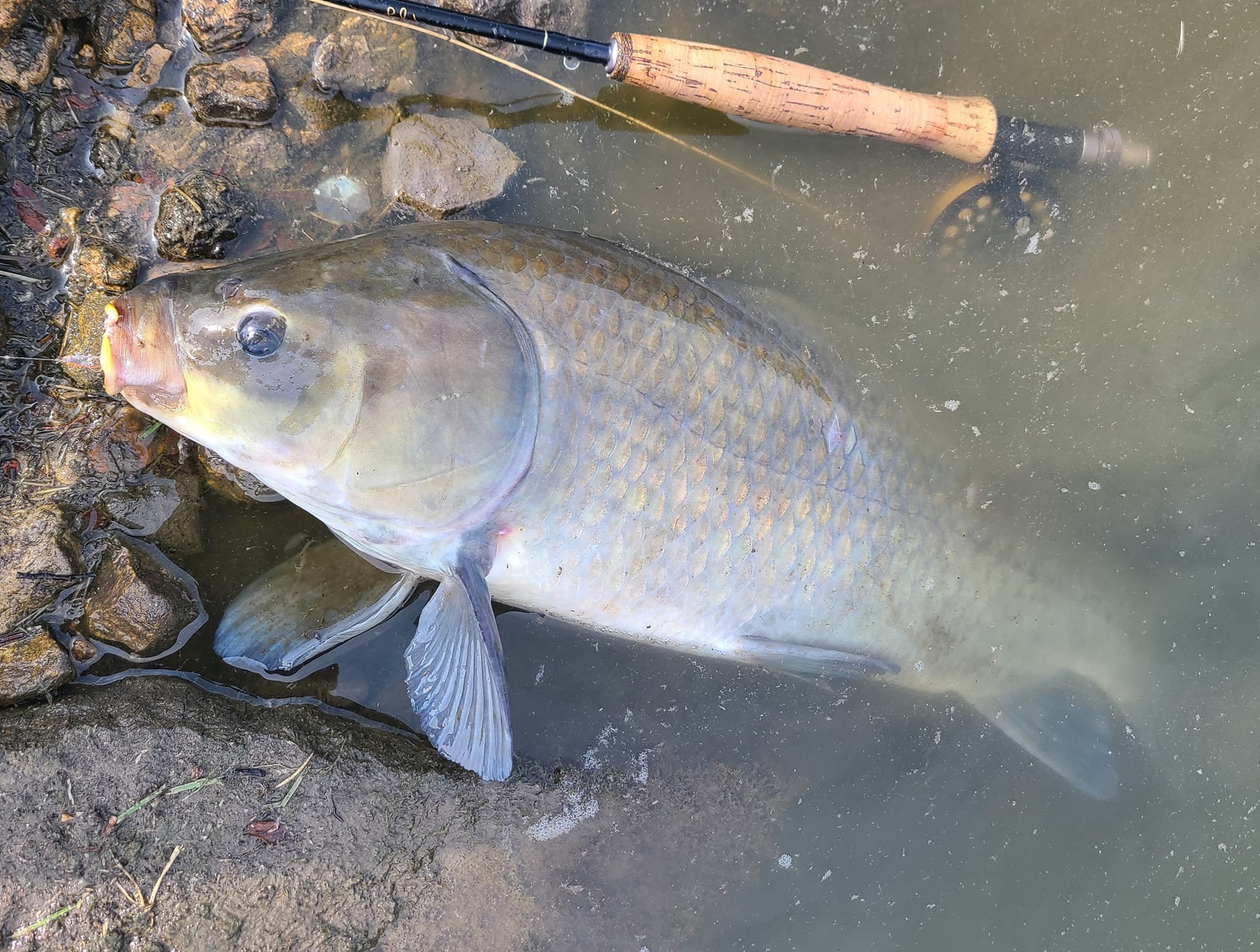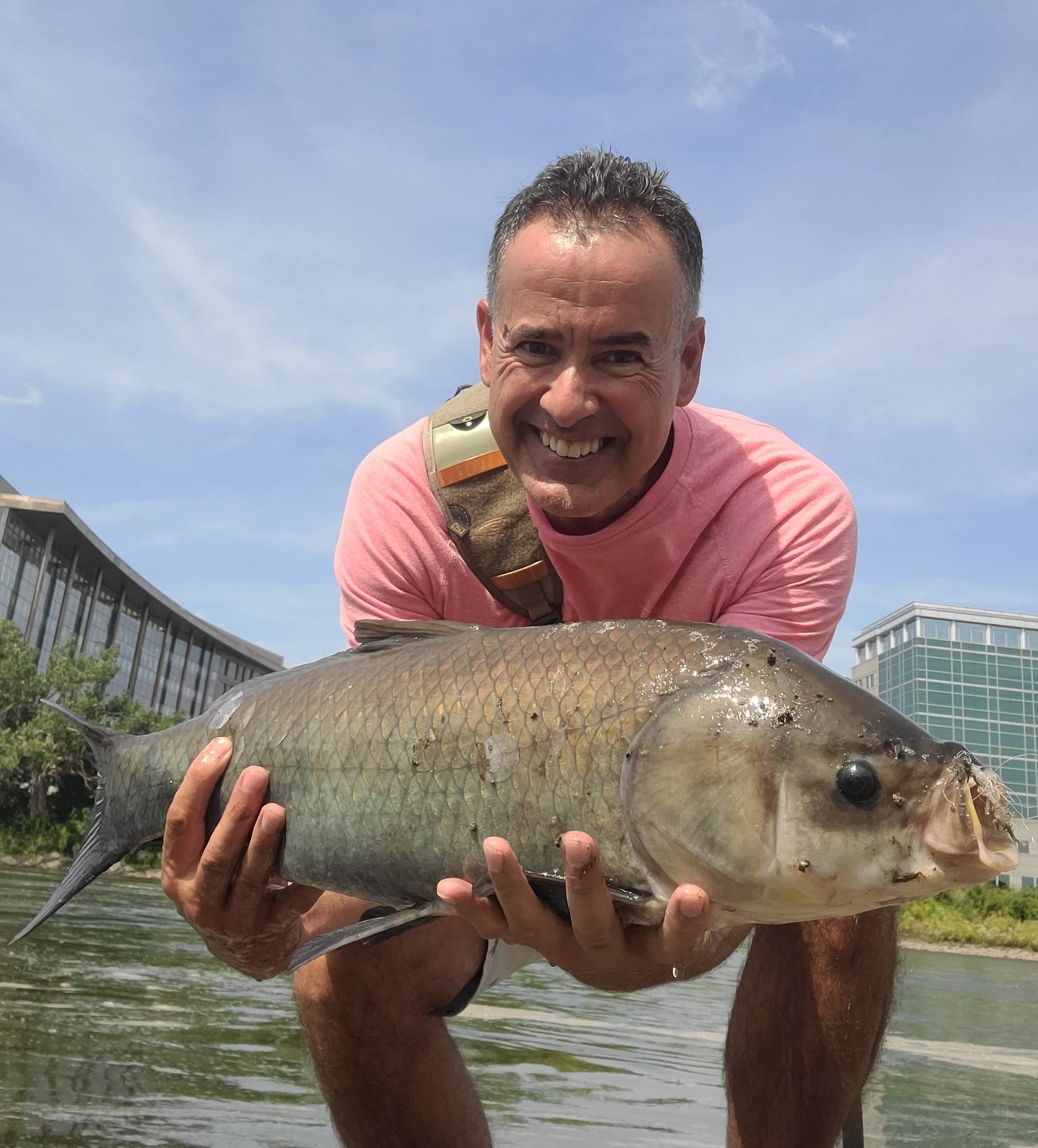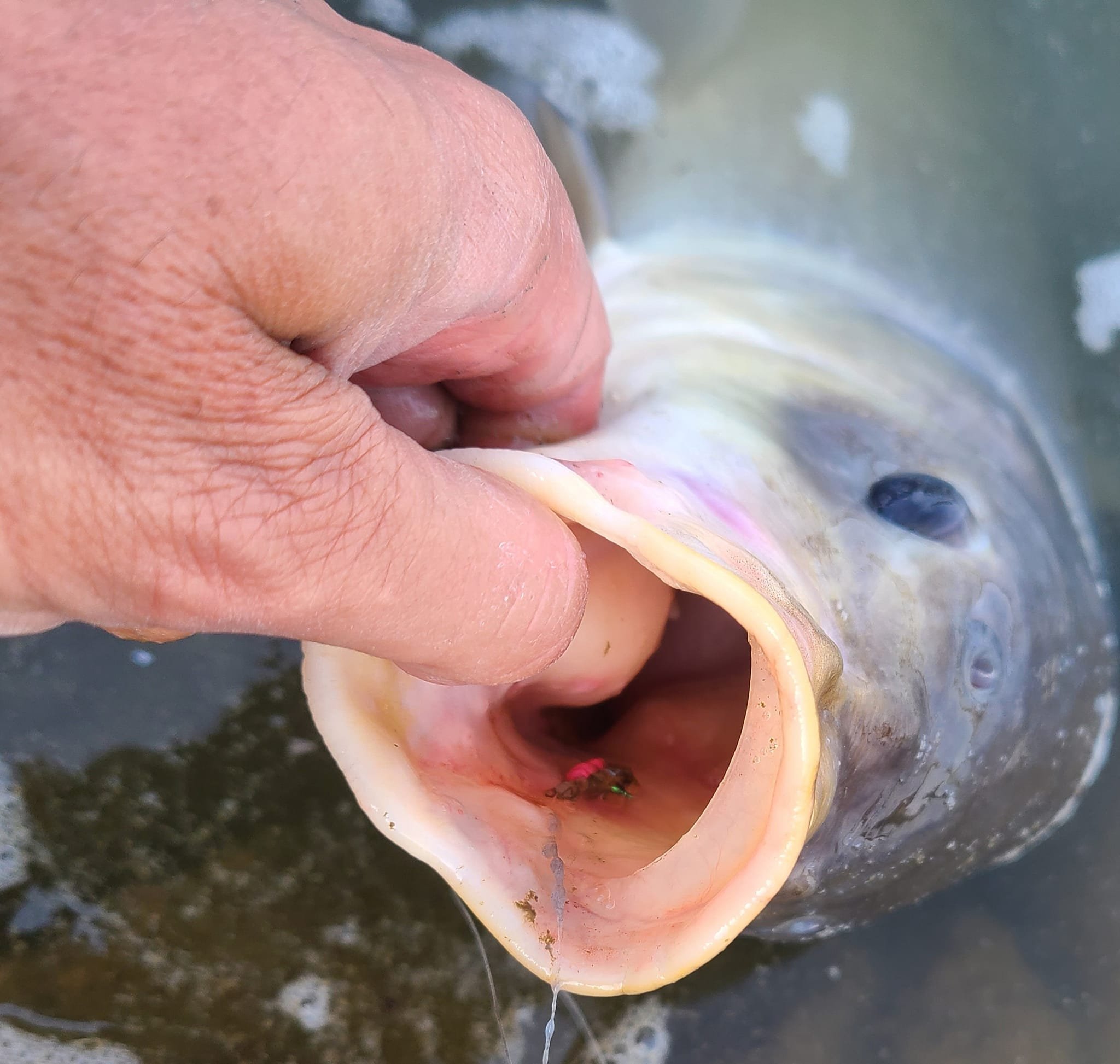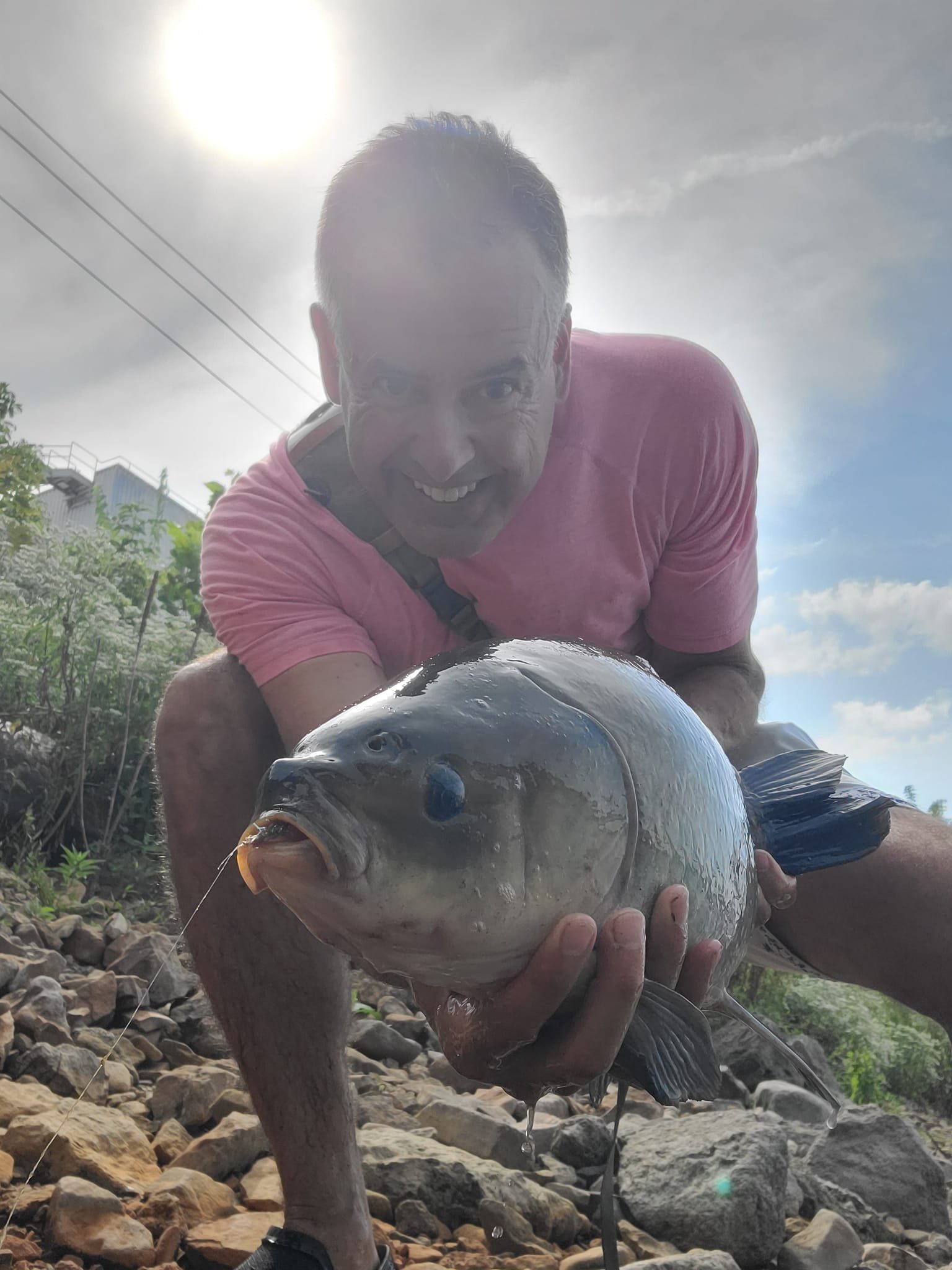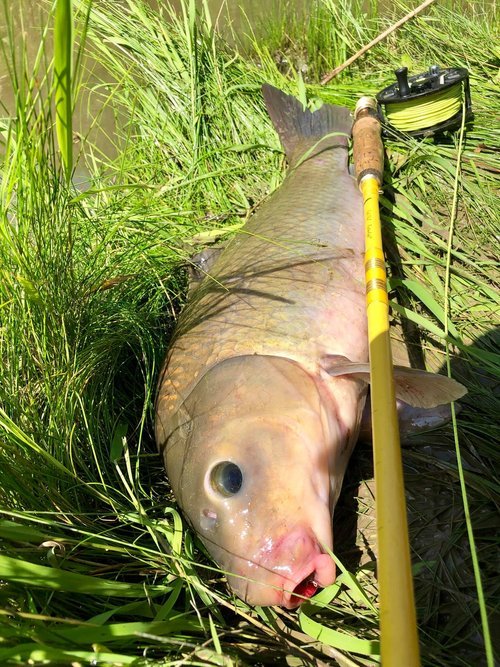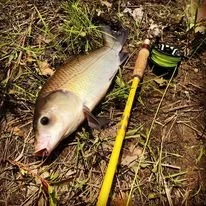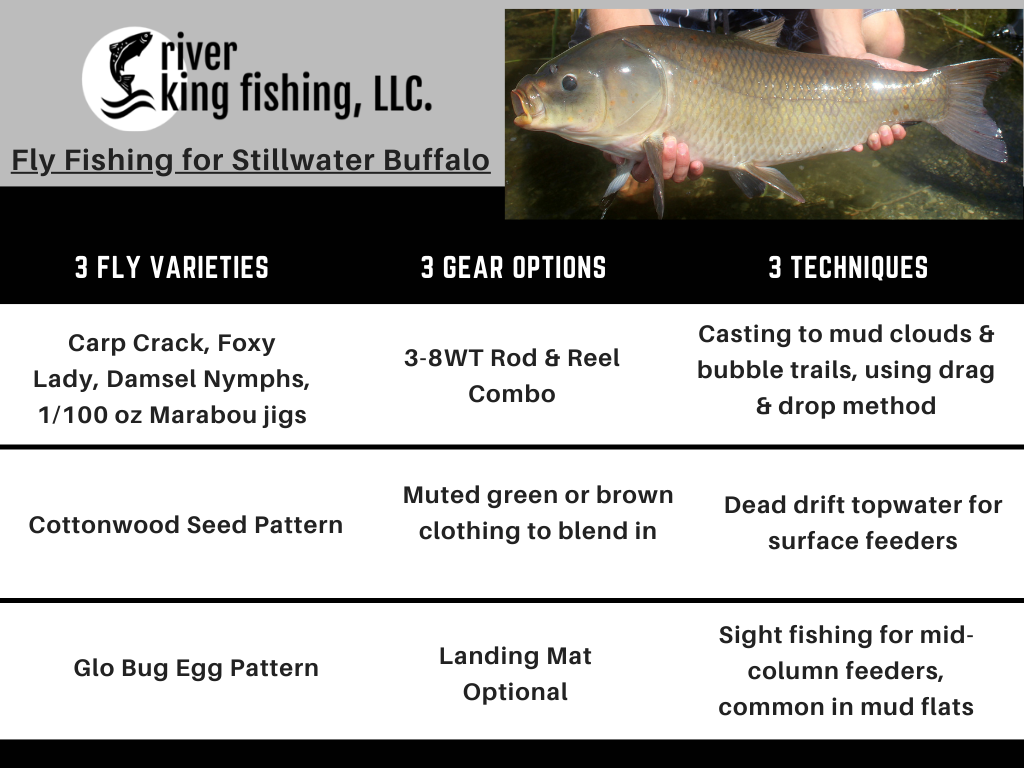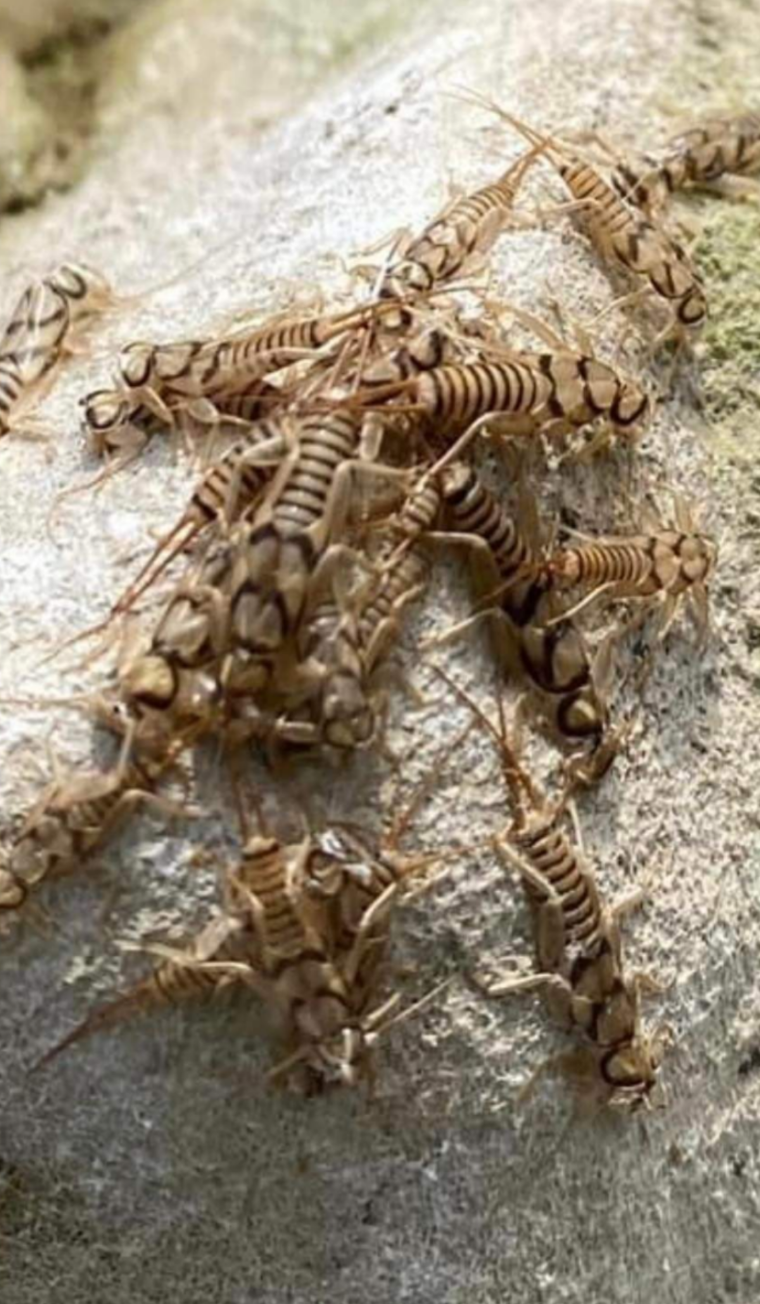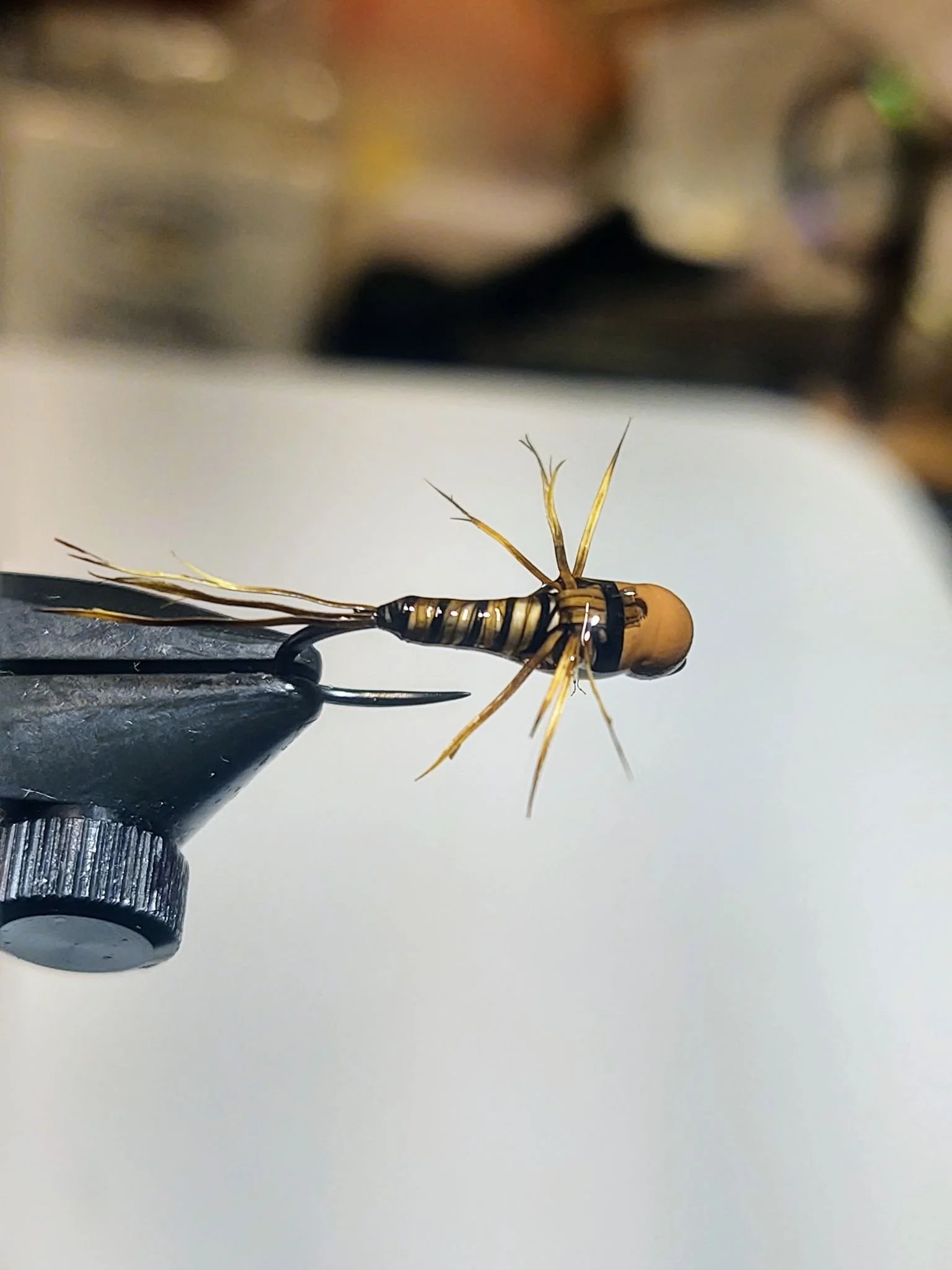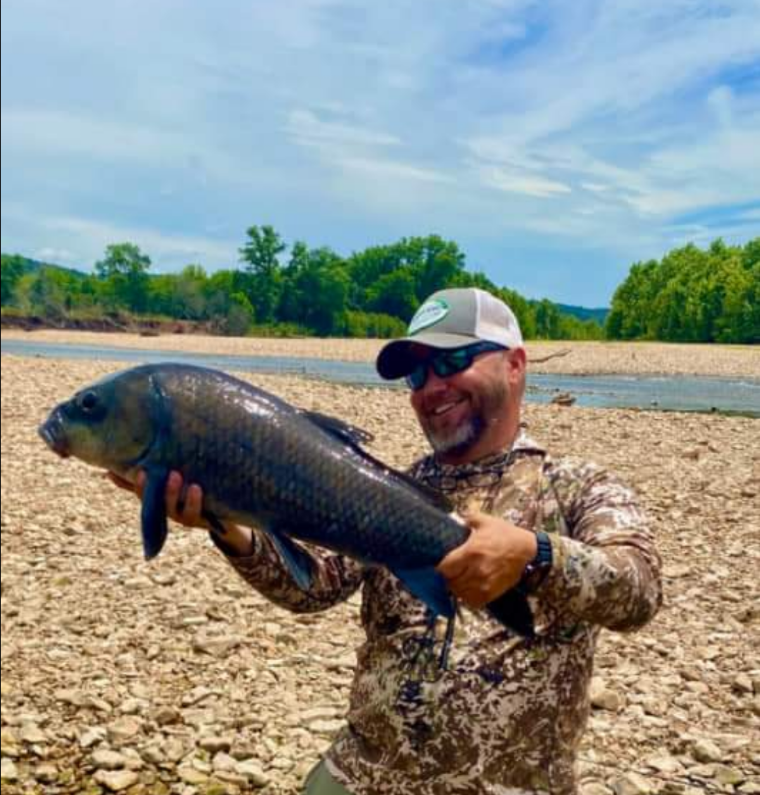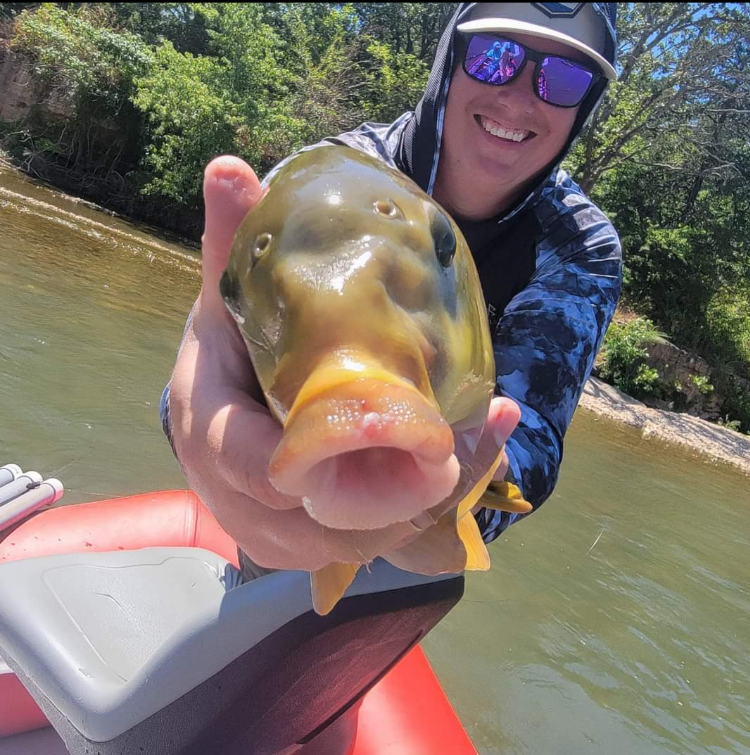Experience a new challenge fly fishing for Buffalo
Donavan Clary with a Smallmouth Buffalo
Buffalo are yet another overlooked species to pursue on the fly. They can sometimes be difficult to locate and are most always reluctant to take a fly. They can especially pose a challenge for the fly angler experienced in the pursuit of predatory species like bass or trout. There are very low odds you will ever convince a Buffalo to aggressively take a popper on top or see the flash of their scales as they slam a streamer you’re stripping in.
Buffalo are true scavengers and therein lies the challenge and the appeal to the multi-species fly angler. Convincing a non-predatory fish to take something other than bait on bottom requires some finesse and where possible, matching the hatch.
What follows are 3 scenarios where I have found success catching both Bigmouth and Smallmouth Buffalo with some additional insights gleaned from other Buffalo “hunters”.
About Buffalo
Smallmouth Buffalo
Very often mistaken for being a Carp or member of the same family of fish as Carp (family Cyprinidae), the Bigmouth and Smallmouth Buffalo
(family Catostomidae) are native and not an invasive species in North America. Their distinctive scale pattern can resemble that of a Common or Grass carp, especially at night. Unfortunately many are destroyed this way in our waterways due to unrestricted bowfishing. In Missouri 2/3 species state records (Black Smallmouth, Bigmouth) for Buffalo were taken by bow. While they will never win a beauty contest, they are great sport to catch and deserve respect plus protection from unlimited harvest.
Smallmouth Buffalo taken on a glo bug
Buffalo are usually a pale white to gray color pattern. Their distinctive black marble eyes make them unmistakable to identify. The downturned mouth of the Smallmouth Buffalo in particular is one that is definitely unique, sometimes mistaken for quillback and carpsuckers in their smaller sizes.
Bigmouth Buffalo
What fly gear do you use to catch Buffalo?
Buffalo are capable of some very strong runs. I’ve absolutely had them take me into my backing like a Common Carp so having a fully spooled, smooth operating fly reel is necessary. That said, you won’t get leaps and other acrobatics you might expect from other species. While they can grow to frankly enormous weights, it may not be necessary to move up to heavier or stiffer gear to manage most Buffalo catches. Fly rod combos from 3 WT to 8WT should cover most situations and my personal experience has been that 3-5WT glass rods are sufficient. Of course larger specimens and heavily structured settings can change that.
Meramec River Smallmouth Buffalo
How can you catch Buffalo fly fishing?
Buffalo can be caught in rivers, creeks, lakes, ponds, and flats in still water to faster current scenarios. In still water situations, Buffalo will often feed from the surface film on top. While very wary and often denying common dry flies, flies like cottonwood seed fly patterns can do well in situations such as those times of year (June and July around here) when seeds on the surface make for an easy snack.
Also in river eddies, Buffalo can be spotted sucking scum bubbles and trails on the surface as another situation where small foam pattern flies can produce. Randy Richter provided the below sample catches he picked up in a recent Iowa trip where 60-80 fish were gathered in a major river eddy. He was able to bring to hand 6 Largemouth Buffs in the 6 to 12lb range using a 3WT fly rod combo.
Mid-column situations when you see Buffalo suspended or just below the surface in shallow settings like a mud flat, a glo bug pattern can be slowly drifted in front of them, practically on their nose to induce a strike.
Smallmouth Buffalo taken mid-column on mud flat using a white glo-bug egg pattern
On bottom, you will also find Buffalo feeding in a fashion similar to carp. Indicators of feeding activity like bubble trails and mud clouds can give away their position. In these situations, flies that can get to the bottom and be put in front of their faces can entice a take. Patterns I’ve seen produce include 1/100 oz marabou jigs or woolly buggers, carp crack and foxy lady patterns.
Largemouth Buffalo caught using a drag and drop method through a mud cloud. Took a Carp Crack fly at an overflow pond adjacent to a creek
The above infographic compiles fly patterns, techniques, and gear recommendations for still water situations where Buffalo have been caught in mud flats, overflow ponds adjacent to creeks, and some slow moving tributaries of the Missouri River.
For fly fishing guide Donavan Clary, Buffalo are caught most of the year in the upper Illinois River and also on the lower Illinois River during spring in Oklahoma. He has found success via a different approach. To catch them in current or in faster moving water situations, “Gotta be on the bottom. Sometimes they want it anchored or stationary..other times it seems to be better if it's barely rolling across the rocks and they sip it up. I've had a few move as much as 3-4ft to eat but most want it right on their feeding lane.”
“I've been taking samples and pumping stomachs for a couple years. What I'm finding mostly, surprisingly, is small stonefly nymphs we have here in the river. “
“I tie a couple small imitations and when I find them feeding in shallows or in manageable current, I can catch them pretty consistently. Much better than when I was using egg patterns and patterns that were no where near what they were looking for.”
Suffice to say, regardless how you attempt to land a Buffalo, bring your patience, your skill, and some decent gear to bring them to hand. It’s always a new adventure, learning about and trying to entice new fish species to bite. Beyond the adventure, the first-hand experience can foster a new appreciation for all the fish that call your local waters home. Not all the glory should go to the usual suspects.


